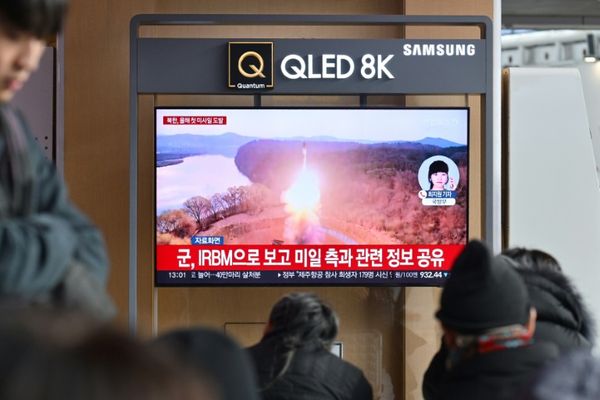
From COVID-19 to the U.S. election, 2020 has been a year of numbers. Numbers matter. Picking which ones to highlight is a powerful tool for democratic and authoritarian governments—even if the choices don’t always sync up with the reality they’re supposed to depict.
While rejecting quantification altogether may appeal to some populists and intellectuals, governments need some form of it to govern massive societies. Yet quantification organizes and simplifies a complex reality into something digestible and concrete. It conveys an aura of objective truth, transparency, and scientific authority to descriptions of reality or to decisions. For the dictator or aspiring autocrat, it can make them appear fair, transparent, and accountable. Even in a democratic state, it can empower one agenda over the other. Choose to evaluate a policy’s impact on the terms of a balance book, and austerity looks appealing. Choose to evaluate it in years of life saved, and things may appear more generous. And in the middle of a pandemic that has made us all involuntary statisticians, anxiously arguing over caseloads and spread, picking the right numbers is more important than ever.
What objects are counted and made politically salient influences public expectations and evaluations. Once a number is at the center of the debate, it can be difficult to dislodge. The hypercompetitive market for attention relegates demands to adjust GDP calculation methods or cost-of-living formulas to the back pages. That’s especially the case in systems, such as China’s, that pride themselves on being “scientific and objective,” and that lack outside controls or evaluation on officials. Once officials became used to GDP growth targets being the core part of their evaluations, as had long been the practice under China’s “GDP supremacy,” moving away from it proved difficult. Limiting the regime’s vision to a single growth measure produced tremendous progress, but pollution, debt, and corruption accumulated in its blind spots.
Numbers have also defined the COVID-19 pandemic. While the crisis has produced arresting images of empty cities and body bags loaded into refrigerated trucks, the scale of the devastation and its spread has been communicated principally in numerical terms. The New York Times, for instance, put infographics onto its front page in 2020 at three times the rate that it did in 2019.
U.S. President Donald Trump clearly believed that if the media paid less attention to the virus, it would stop hurting his electoral chances. Since he knew the coverage was centered on rising case counts, he tossed out a gambit to undermine those numbers. On Aug. 1, he tweeted: “Wrong! We have more cases because we have tested far more than any other country, 60,000,000. If we tested less, there would be less cases.” But the trillions of viruses did not care what numbers Fox News showed or the New York Times reported. The reality is distinct from the number trying to measure that reality.
On the pandemic-induced economic crisis, Trump again attempted to shift to more favorable terrain. By focusing on stock market indices rather than on the millions of jobs lost or the collapse of state and local government revenue, Trump could sidestep conversations about the recession by pointing to a bright spot. But while stock markets typically track the real economy’s progress, unlisted small businesses were routed while larger publicly traded firms stabilized. At the individual level, this split led to what’s known as a K-shaped recovery, as just under half of Americans own no stocks, while the top 10 percent hold around 85 percent of shares.
Meanwhile, China focused on the virus rather than the stock market or the economy. Despite the regime’s continued development objectives, the Chinese government’s response to COVID-19 was deeply trained on the virus itself. While there were rumblings about trade-offs between opening back up the economy and halting the virus’s spread, the country’s extensive lockdowns and closures continued through February until a March 22 statement that Wuhan, the original viral epicenter, had seen zero new local cases for four days in a row. An obsessive focus on particular numbers—both caseloads and the reproduction number of the virus—paid off.
Success at combating the virus also made possible a swift economic rebound. China, with a population of 1.4 billion, has not reported 500 cases in a single day since the end of February, whereas North Dakota, with a population of 750,000, has averaged over 500 cases each day since Oct. 11. After quashing the virus, China, almost alone among the world’s major economies, has posted positive year-on-year growth.
And in part as a result, China has finally inched away from its long period of GDP supremacy, dropping first a specific numerical goal in favor of a targeted range of growth and then dropping that target altogether this year. While surely some part of that decision is attributable to China’s own economic headwinds due to the virus, Beijing in large part blamed the instability of foreign markets, which have been ravaged by the pandemic.
Quantification’s weaknesses should not lead us to throw the baby out with the bathwater. It encourages precise thinking, fair comparisons, informed plans, and subsequent evaluations. What we need is an understanding that different values and different priorities are deeply embedded in the measures governments choose. Those differences should be treated seriously and honestly, neither ignored as arcana nor tossed aside as irrelevant in an uncertain world.
The pandemic required a focus on the right numbers, not on massaging them to make things appear better or making the false choice of the economy over lives. The same applies to the final battle against the coronavirus. The focus on slight differences in vaccine efficiency is a distraction compared to the numbers that matter most: the speed and efficiency of distributing the vaccine, and of picking the right groups to vaccinate first. In the long term, the pandemic might create a public that’s more informed—and more active—in choosing what statistics it values.







